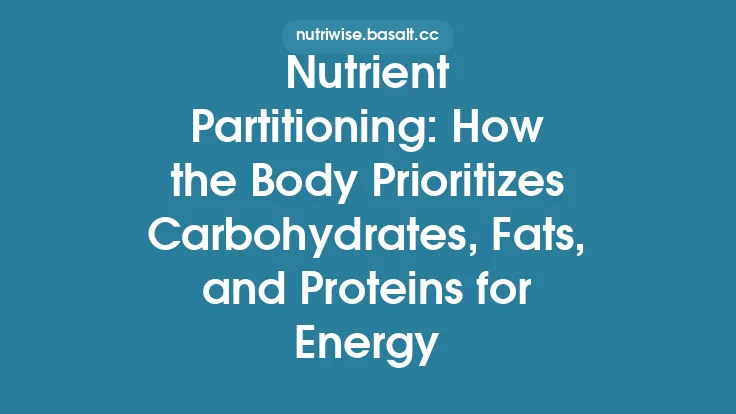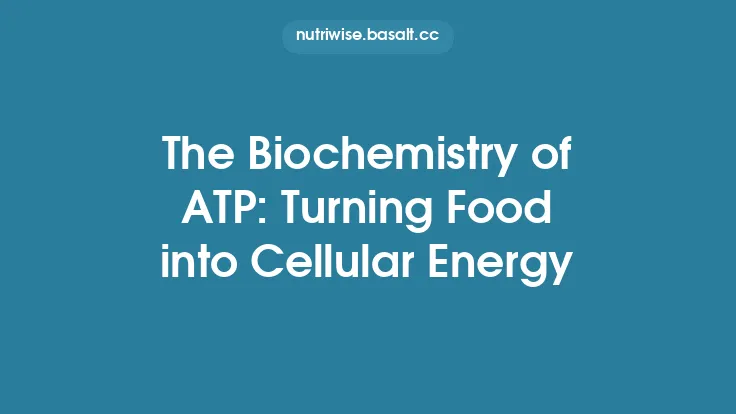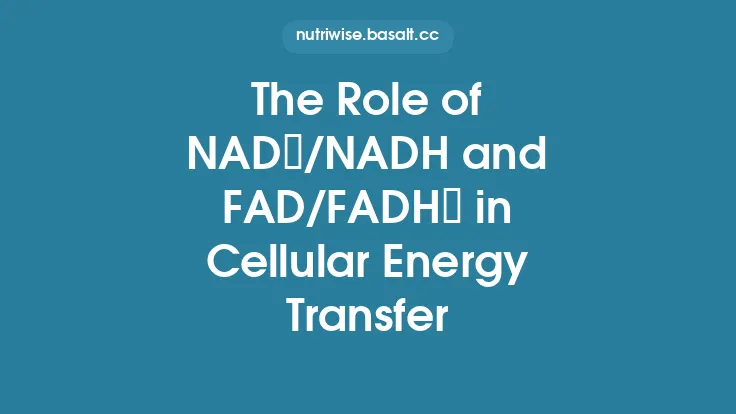Macronutrients—carbohydrates, fats, and proteins—are the three dietary building blocks that supply the energy needed for every physiological process, from the subtle maintenance of cellular ion gradients to the powerful contractions of skeletal muscle. While the body can draw on each of these fuels, the way they are processed, stored, and later mobilized follows distinct, well‑coordinated steps that together ensure a steady supply of usable energy under a wide range of conditions. Understanding these steps provides a solid foundation for making informed nutritional choices that support health, performance, and long‑term vitality.
Digestive Processing of Macronutrients
Carbohydrates
Complex carbohydrates (starches, fiber) are first broken down by salivary and pancreatic amylases into smaller oligosaccharides. Brush‑border enzymes (maltase, sucrase, lactase) then cleave these into monosaccharides—primarily glucose, fructose, and galactose. Glucose is the most readily utilized sugar; fructose and galactose are converted to glucose in the liver before entering the bloodstream.
Fats
Dietary lipids are emulsified by bile salts, which increase the surface area of fat droplets. Pancreatic lipase, aided by colipase, hydrolyzes triglycerides into two free fatty acids and one 2‑monoacylglycerol per molecule. These products form micelles with bile salts, facilitating their transport to the intestinal epithelium.
Proteins
Proteolytic enzymes (pepsin in the stomach, trypsin, chymotrypsin, and carboxypeptidases from the pancreas) fragment dietary proteins into smaller peptides. Peptidases on the brush border then release free amino acids and di‑/tripeptides, which are ready for absorption.
Absorption and Transport Pathways
Carbohydrates
Glucose and galactose are taken up by sodium‑glucose linked transporters (SGLT1) on the apical membrane of enterocytes, while fructose uses facilitated diffusion (GLUT5). Once inside the cell, they exit across the basolateral membrane via GLUT2 and enter the portal circulation, heading straight to the liver.
Fats
Free fatty acids and monoacylglycerols are absorbed into enterocytes, where they are re‑esterified into triglycerides. These newly formed triglycerides are packaged with cholesterol, phospholipids, and apolipoproteins into chylomicrons. Chylomicrons are too large for direct entry into the blood capillaries, so they are secreted into the lymphatic system and eventually reach the bloodstream via the thoracic duct.
Proteins
Amino acids and small peptides are transported into enterocytes by a variety of sodium‑dependent and independent amino acid transporters. Inside the cell, di‑ and tripeptides are further hydrolyzed to free amino acids. These amino acids then exit the enterocyte via the basolateral membrane and join the portal blood, traveling to the liver for processing.
Primary Storage Forms and Their Significance
- Glycogen – The liver and skeletal muscle store glucose as glycogen, a highly branched polymer that can be rapidly mobilized. Liver glycogen serves to maintain blood glucose between meals, while muscle glycogen is primarily used locally to fuel contraction.
- Triglycerides – Excess dietary fat, as well as surplus carbohydrate and protein, are ultimately stored as triglycerides within adipose tissue. This depot is the most energy‑dense form of storage, providing a long‑term reserve that can be accessed during prolonged periods of low intake.
- Protein Pools – While the body does not store protein for future energy use in the same way it stores glycogen or fat, skeletal muscle protein represents a substantial nitrogen and amino‑acid reservoir. In situations of severe caloric deficit, amino acids from muscle protein can be deaminated and used for gluconeogenesis, albeit at a metabolic cost.
Mobilization of Stored Energy
When blood glucose levels dip or energy demand rises, hormonal signals trigger the release of stored fuels:
- Glycogenolysis – Liver glycogen is broken down to glucose‑6‑phosphate, which is dephosphorylated to free glucose and released into the bloodstream. Muscle glycogen is similarly broken down, but the resulting glucose‑6‑phosphate is used locally for ATP generation.
- Lipolysis – Triglycerides in adipocytes are hydrolyzed by lipases into free fatty acids and glycerol. Free fatty acids travel bound to albumin in the plasma and are taken up by tissues that can oxidize them for energy. Glycerol can be converted to glucose in the liver.
- Amino‑Acid Catabolism – When other sources are insufficient, amino acids are deaminated, and their carbon skeletons enter various points of the central metabolic network to support glucose production or direct oxidation.
These mobilization processes are continuous and overlapping, ensuring that the body rarely experiences an absolute shortage of usable energy.
Macronutrient Contributions to Different Physiological Demands
- Brain Function – The central nervous system relies heavily on a constant supply of glucose. While ketone bodies derived from fatty acid oxidation can partially substitute during prolonged fasting, glucose remains the primary fuel under normal conditions.
- Muscle Activity – During high‑intensity, short‑duration efforts, muscle glycogen provides rapid ATP through glycolytic pathways. For sustained, moderate‑intensity activity, fatty acids become the dominant substrate, sparing glycogen reserves.
- Basal Metabolic Processes – Maintenance of organ function, ion transport, and protein turnover draws on a mixture of glucose, fatty acids, and, to a lesser extent, amino acids. The proportion varies with nutritional status but generally reflects the relative availability of each macronutrient.
Balancing Macronutrient Intake for Sustainable Energy
A diet that supplies adequate amounts of each macronutrient supports the body’s ability to store and mobilize energy efficiently:
- Carbohydrate Adequacy – Providing enough carbohydrate ensures that liver glycogen stores are replenished, which helps maintain stable blood glucose and reduces reliance on protein for gluconeogenesis.
- Sufficient Dietary Fat – Including healthy fats (monounsaturated, polyunsaturated) supplies essential fatty acids and supports the formation of triglyceride stores that can be tapped during extended periods without food.
- Quality Protein – Consuming complete proteins (containing all essential amino acids) preserves muscle mass and supplies the amino acids needed for ongoing protein synthesis and occasional energy contribution.
By aligning intake with typical activity patterns and metabolic needs, the body can keep its energy reservoirs well‑stocked without excessive reliance on any single source.
Practical Takeaways for Everyday Life
- Spread Carbohydrate Intake – Distribute carbohydrate‑rich foods throughout the day to keep glycogen stores topped up and to provide a steady glucose supply for the brain and other glucose‑dependent tissues.
- Incorporate Healthy Fats – Aim for a balance of omega‑3 and omega‑6 fatty acids from sources such as fish, nuts, seeds, and plant oils. These fats support membrane integrity and provide a reliable long‑term energy reserve.
- Prioritize Complete Proteins – Include a variety of protein sources (legumes, dairy, lean meats, soy) to meet essential amino‑acid requirements and maintain muscle health.
- Mind Portion Sizes – Even though the body can store excess energy, overly large portions of any macronutrient can lead to unnecessary weight gain and metabolic strain.
- Stay Hydrated – Water is essential for the transport of nutrients and the removal of metabolic by‑products; adequate hydration supports efficient digestion and absorption of all macronutrients.
By appreciating how carbohydrates, fats, and proteins are digested, absorbed, stored, and later mobilized, individuals can make choices that keep the body’s energy engine running smoothly—day after day, year after year.





